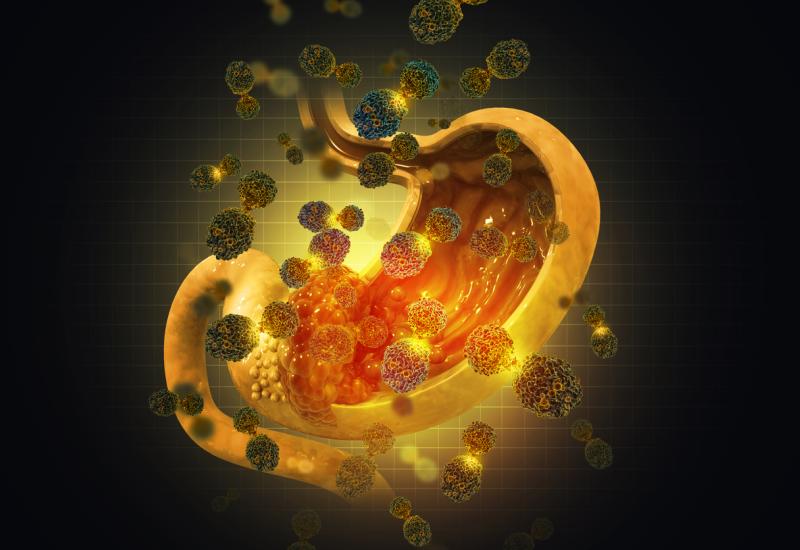
Seven problems for Geron
Brutal FDA briefing documents raise questions about the approvability of imetelstat for myelodysplastic syndromes.
Brutal FDA briefing documents raise questions about the approvability of imetelstat for myelodysplastic syndromes.

Last year Geron looked like it might finally have an approvable drug in imetelstat after over three decades of existence, but yesterday these hopes took a blow. Damning FDA briefing documents, released ahead of an advisory committee meeting on Thursday, leave imetelstat’s chances in myelodysplastic syndromes hanging in the balance.
The FDA raised various questions about efficacy and safety in the phase 3 Imerge trial; one of the most worrying revelations involved two cases of liver injury that triggered Hy’s law, notably after Geron said in January 2023 that there had been no such cases. But there was plenty more to worry Geron investors, who sent the group’s stock down 12% yesterday.
1) Unmet secondary endpoints
The randomised part of Imerge tested imetelstat versus placebo in low to intermediate-risk MDS patients who had failed or were ineligible for erythropoiesis-stimulating agents (ESAs). In January 2023 Geron said the study had met its primary endpoint, eight-week transfusion independence, with a rate of 40% versus 15% for placebo (p<0.001). It also met a key secondary endpoint, 24-week transfusion independence.
However, the trial didn't show a benefit with imetelstat on various other secondary endpoints, including complete response, partial response, overall survival and haematologic improvement in the erythroid lineage. These findings don’t support Geron’s claim that imetelstat, a telomerase inhibitor, could be disease modifying.
2) Two cases of Hy’s law
Imerge’s efficacy shortfalls are particularly pertinent given the potential risks of imetelstat. Particularly concerning were two cases of liver enzyme elevations meeting the laboratory definition of Hy’s law, a rule of thumb suggesting patients are at risk of fatal drug-induced liver injury.
One question is why Geron had previously said there were "no cases of Hy's law or drug-induced liver injury observed". The briefing documents provided some clues: one case was in a patient who had bilirubin abnormalities at baseline and “no clear pattern of worsening during treatment”.
The other came in a patient receiving imetelstat alongside deferiprox, used to treat iron overload. The FDA noted that Geron put the abnormalities down to deferiprox, but said this was tough to call, particularly as the abnormalities resolved when both drugs were stopped, but recurred after restarting first imetelstat then deferiprox.
3) Other toxicities
Overall, the FDA noted a high rate of grade 3-4 treatment-emergent adverse events in the imetelstat group, highlighting cytopenias, which occurred in responders and non-responders alike, leaving a “large subset of patients who have clinically significant cytopenias with no benefit”.
The rates of haemorrhage and infection were also higher with imetelstat than placebo, which B Riley analysts attributed to the cytopenias. They added that rates of higher-grade adverse events were similar between the two arms, however, which they deemed more clinically relevant.
But there was a fatality in the imetelstat arm that, it seems, could have been avoided. According to the briefing documents, the patient had developed grade 3 neutropenia and thrombocytopenia, but received imetelstat in a “protocol violation”, developing sepsis, and dying 30 days later.
4) Unimpressive duration of response
When Geron released the Imerge results it noted a median 51.6-month duration of response with imetelstat, versus 13.3 weeks for placebo. However, the FDA spelled out that this only took into account the subset of patients who achieved eight-week transfusion independence.
Among the entire study population, median duration of response was only 5.0 weeks with imetelstat – the difference serving to highlight the fact that most imetelstat-treated patients weren't eight-week responders.
5) Few US patients
Another worry for Geron could be the small proportion of US patients in Imerge, with most coming from Europe; the FDA has previously shown a preference for US data. Of the 13 US patients receiving imetelstat, eight were evaluable and only one achieved eight-week transfusion independence.
6) Changing treatment landscape
Since Geron began Imerge, a competitor has emerged in the form of Bristol Myers Squibb’s Reblozyl, which was approved last August for first-line low to intermediate-risk MDS. A question now is how imetelstat might fit into this new treatment landscape, especially given that only around 7% of Imerge patients had previously received Reblozyl.
7) Efficacy versus risks
The adcom's voting question is whether imetelstat’s benefits outweighs its risks. On Thursday we’ll find out, but an FDA decision on the project’s approvability isn't due until 16 June.
The twists and turns of imetelstat's development
| Mar 2024 | FDA briefing documents are published ahead of 14 March adcom |
|---|---|
| Dec 2023 | Imerge published in The Lancet |
| Aug 2023 | FDA accepts imetelstat filing; 16 Jun 2024 PDUFA, plus adcom |
| May 2023 | Imerge presented at ASCO |
| Jan 2023 | Imerge data toplined: 8wk transfusion independence 40%, vs 15% for placebo |
| Oct 2020 | Geron arranges $75m loan facility |
| May 2020 | Geron completes $140m stock & warrant offering |
| Oct 2019 | Ph3 part of Imerge begins |
| Dec 2018 | Imbark data presented at ASH: 6% spleen response, 21% symptom response |
| Sep 2018 | J&J pulls out of imetelstat deal |
| Nov 2015 | Ph2 part of Imerge study begins (post-ESA or ESA-ineligible patients with low/intermediate-risk MDS) |
| Aug 2015 | Imbark study begins (ph2 in post-Jakafi patients with intermediate/high-risk myelofibrosis) |
| Nov 2013 | J&J licenses imetelstat for $35m up front |
| Nov 2013 | Clinical hold lifted |
| Mar 2013 | Imetelstat goes on US clinical hold over liver function test abnormalities |
| Dec 2013 | Mayo Clinic’s Dr Ayalew Tefferi presents open-label, 33-patient myelofibrosis study of imetelstat at ASH, saying “the drug works” |
| 1990 | Geron founded to focus on diseases of ageing |
Source: company statements.
1579













